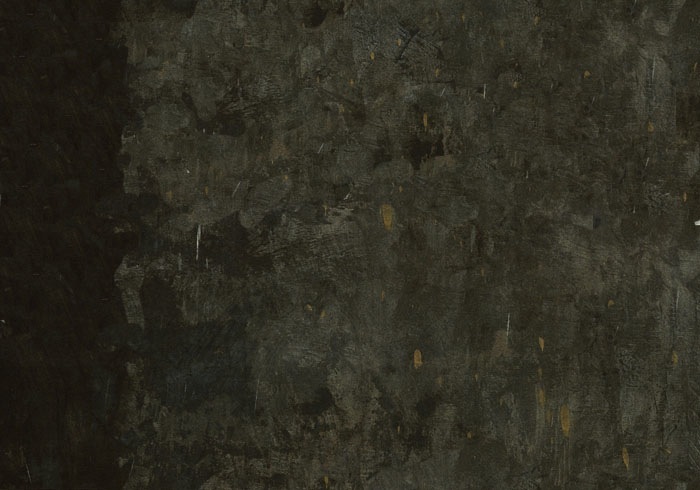Point B
A Documentary on Parkour by Michael Alosi
Point B
A Documentary on Parkour by Michael Alosi



Background

The Journey of Making Point B
Parkour brought me around the world & introduced me to a vast array of people. I was amazed at how welcoming all the traceurs I met were & I consider each a friend.
But this project was not easy, making a documentary almost singlehandedly with virtually no budget involved a lot of flexibility, coffee, & sleeping on couches...
2006
 February: watched Dvinsk Clan, my first exposure to Parkour
February: watched Dvinsk Clan, my first exposure to Parkour
 March: met with Ryan Ford & Matt Perry in Boulder, Colorado to take photos for the local paper
March: met with Ryan Ford & Matt Perry in Boulder, Colorado to take photos for the local paper
2007
 January - May: chose Parkour as my Journalism graduate thesis & began research
January - May: chose Parkour as my Journalism graduate thesis & began research
 June: attended PK Cali’s monthly beginner class in Los Angeles. The next day we went to UCLA for my first jam
June: attended PK Cali’s monthly beginner class in Los Angeles. The next day we went to UCLA for my first jam
 July: jammed with NEPK in Boston
July: jammed with NEPK in Boston
 August: attended the 4-day Colorado National Jam in Boulder, Denver & Golden
August: attended the 4-day Colorado National Jam in Boulder, Denver & Golden
 August: filmed with Chris Levesque & NoSole in San Francisco
August: filmed with Chris Levesque & NoSole in San Francisco
 September: met Nik Sartain at an SLCPK jam in Salt Lake City, UT. Nik also brought me mountain running & on his suggestion I met up with Devon Bardole
September: met Nik Sartain at an SLCPK jam in Salt Lake City, UT. Nik also brought me mountain running & on his suggestion I met up with Devon Bardole
 September: filmed with C4 in Chengdu while on a trip to China filming the Women’s World Cup. They were even nice enough to give me a lift home in typical Chinese fashion - squished 3 to a motor scooter
September: filmed with C4 in Chengdu while on a trip to China filming the Women’s World Cup. They were even nice enough to give me a lift home in typical Chinese fashion - squished 3 to a motor scooter
 October - December: researched & wrote my thesis’ background research paper ‘The Evolution of the Social Functions of Sport & the Advent of Extreme Sports’
October - December: researched & wrote my thesis’ background research paper ‘The Evolution of the Social Functions of Sport & the Advent of Extreme Sports’
 November: filmed at Ryan Ford’s interview with ESPN360
November: filmed at Ryan Ford’s interview with ESPN360
 November: went on a road trip over Thanksgiving break
November: went on a road trip over Thanksgiving break
 stopped by Salt Lake City to see Nik & Devon
stopped by Salt Lake City to see Nik & Devon
 cruised to San Francisco to meet up with Chris Levesque & NoSole
cruised to San Francisco to meet up with Chris Levesque & NoSole
 interviewed Matt Perry just south of San Jose on my way to interview Victor Lopez in LA
interviewed Matt Perry just south of San Jose on my way to interview Victor Lopez in LA
 December: sat down to edit my film, a process that took the next year
December: sat down to edit my film, a process that took the next year
2008
 January: interviewed Alex Rozis at the ESPN X-games in Aspen
January: interviewed Alex Rozis at the ESPN X-games in Aspen
 March-August: filmed the Helmet Cam extreme sports segments
March-August: filmed the Helmet Cam extreme sports segments
 April: successfully defended my thesis & secured a travel grant from my school’s dean for a plane ticket to Europe
April: successfully defended my thesis & secured a travel grant from my school’s dean for a plane ticket to Europe
 May: met with Team Vayne in Colorado Springs
May: met with Team Vayne in Colorado Springs
 May: traveled to France & England with Ryan Ford & Matt Marshall
May: traveled to France & England with Ryan Ford & Matt Marshall
 Day 1: visited Evry’s local training spots with local traceurs
Day 1: visited Evry’s local training spots with local traceurs
 Day 2-4: planned for the Yamakasi’s ADD Academy Inauguration
Day 2-4: planned for the Yamakasi’s ADD Academy Inauguration
 Day 5: filmed the Yamakasi’s open-to-the-public training session followed by an ADD demonstration
Day 5: filmed the Yamakasi’s open-to-the-public training session followed by an ADD demonstration
 Day 6: filmed & participated in Evry’s citywide jam
Day 6: filmed & participated in Evry’s citywide jam
 Day 7: trained with the Yamakasi in Paris
Day 7: trained with the Yamakasi in Paris
 Day 8: visited the world-famous climbing spot, Fontaine Bleu, with some local traceurs to practice Parkour in a natural setting
Day 8: visited the world-famous climbing spot, Fontaine Bleu, with some local traceurs to practice Parkour in a natural setting
 Day 9-11: trained with local traceurs in London & attended 2 Parkour Generations classes
Day 9-11: trained with local traceurs in London & attended 2 Parkour Generations classes
 Day 12-15: trained & explored Derby, England with Livewire, including the rooftop mission
Day 12-15: trained & explored Derby, England with Livewire, including the rooftop mission
 November: first cut of film played at Asheville Film Festival
November: first cut of film played at Asheville Film Festival
2009
 January-March: built and launched www.pointbmovie.com
January-March: built and launched www.pointbmovie.com

A History of Parkour
The history of Parkour is both controversial & convoluted, filled with half-truths, endless debates, avid opinions & presumed speculations. Yet some facts remain...
The Natural Method
 Georges Hébert was a French exercise theorist in the early 20th century. Upon traveling to several primitive societies, Hébert was amazed at the high level of fitness of these peoples compared to citizens of the developed countries
Georges Hébert was a French exercise theorist in the early 20th century. Upon traveling to several primitive societies, Hébert was amazed at the high level of fitness of these peoples compared to citizens of the developed countries
 Hébert attributed this effect to Industrialization & the sedentary lifestyle it created
Hébert attributed this effect to Industrialization & the sedentary lifestyle it created
 As a result, Hébert developed the Natural Method, a fitness regimen replicating the survival activities of primitive man also adopting the motto ‘Be strong to be useful’
As a result, Hébert developed the Natural Method, a fitness regimen replicating the survival activities of primitive man also adopting the motto ‘Be strong to be useful’
 The French embraced Hebert’s ideology using Natural Method-inspired obstacle courses for physical education & military training
The French embraced Hebert’s ideology using Natural Method-inspired obstacle courses for physical education & military training
The Yamakasi
 Raymond Belle learned the Natural-Method inspired techniques as a French soldier in the Vietnam War. After his military tour, Raymond Belle employed these skills as a firefighter in Paris
Raymond Belle learned the Natural-Method inspired techniques as a French soldier in the Vietnam War. After his military tour, Raymond Belle employed these skills as a firefighter in Paris
 Belle’s son, David Belle, along with friends Yann Hnautra & David Malgogne began imitating Raymond’s training roughly 20 years ago in the Parisian suburbs of Evry & Lisses
Belle’s son, David Belle, along with friends Yann Hnautra & David Malgogne began imitating Raymond’s training roughly 20 years ago in the Parisian suburbs of Evry & Lisses
 Several other friends including Châu Belle Dinh, Laurent Piemontesi, & Williams Belle joined in & founded the Yamakasi
Several other friends including Châu Belle Dinh, Laurent Piemontesi, & Williams Belle joined in & founded the Yamakasi
 Over time, the group disagreed over the definitions of Parkour leading to a fissure in which
Over time, the group disagreed over the definitions of Parkour leading to a fissure in which
 Parkour defines the style of the sport keeping to the original goals of fast & efficient motion in moving through an environment
Parkour defines the style of the sport keeping to the original goals of fast & efficient motion in moving through an environment
 L’Art Du Deplacement (ADD), or the Art of Motion, is a physical training incorporating a spirit of service echoing Hebert’s ideal ‘Be strong to be useful’
L’Art Du Deplacement (ADD), or the Art of Motion, is a physical training incorporating a spirit of service echoing Hebert’s ideal ‘Be strong to be useful’
Parkour in Pop Culture
 In 2003, some of the Yamakasi protege’s including Sébastien Foucan & Stephane Vigroux displayed Parkour in a film called Jump London which aired on the BBC. The film called the sport Freerunning, meant as an English translation of Parkour
In 2003, some of the Yamakasi protege’s including Sébastien Foucan & Stephane Vigroux displayed Parkour in a film called Jump London which aired on the BBC. The film called the sport Freerunning, meant as an English translation of Parkour
 Jump London caused two key effects
Jump London caused two key effects
 a rapid spread of the sport
a rapid spread of the sport
 a confusion about what to call this new sport
a confusion about what to call this new sport
 After heated debate, Freerunning has come to mean a method of moving through an environment however you like. Freerunning is free of the restrictions of Parkour’s fast & efficient motion & ADD’s ideal ‘Be strong to be useful’. However, newcomers to the sports & the media have perpetuated a confusion of the 3 terms
After heated debate, Freerunning has come to mean a method of moving through an environment however you like. Freerunning is free of the restrictions of Parkour’s fast & efficient motion & ADD’s ideal ‘Be strong to be useful’. However, newcomers to the sports & the media have perpetuated a confusion of the 3 terms
 Parkour has continued spreading & integrating into pop culture via movies, commercials, & music videos. Perhaps the most famous display of Parkour is Sébastien Foucan’s chase scene in the recent James Bond film Casino Royale.
Parkour has continued spreading & integrating into pop culture via movies, commercials, & music videos. Perhaps the most famous display of Parkour is Sébastien Foucan’s chase scene in the recent James Bond film Casino Royale.

The Development of
Modern Sports
When researching for this documentary, I delved into an exploration of why sports are part of our world. I discovered that like most aspects of society, sports were created to satisfy human needs. & as societies evolved, so did the sports.
A brief history of the social function of sports
 Ancient societies used sport for practical tasks linked to survival such as hunting, skiing (for transportation), leader selection, & worship
Ancient societies used sport for practical tasks linked to survival such as hunting, skiing (for transportation), leader selection, & worship
 The largest shift in pre-modern sport was from medieval times to the Renaissance, when sport shifted it’s emphasis from brute force to finesse
The largest shift in pre-modern sport was from medieval times to the Renaissance, when sport shifted it’s emphasis from brute force to finesse
 The Industrial Revolution was the major catalyst of sporting development
The Industrial Revolution was the major catalyst of sporting development
 Workers used sport to cope with harsh working/living conditions
Workers used sport to cope with harsh working/living conditions
 Employers encouraged sports as a means of social control
Employers encouraged sports as a means of social control
 Industrialization brought many technology advancements causing
Industrialization brought many technology advancements causing
 mass communication & globalization
mass communication & globalization
 the ability to measure distances & times with increased precision, facilitating a movement towards quantifying sports
the ability to measure distances & times with increased precision, facilitating a movement towards quantifying sports
 the invention of new sports such as the bicycle
the invention of new sports such as the bicycle
 the creation of leisure time
the creation of leisure time
The modern sportscape
 Today sports act as a form of exercise in an increasingly technological world. The 1996 U.S. Surgeon General’s Report on Physical Activity & Health says the age in which we live is the major barrier to physical activity:
Today sports act as a form of exercise in an increasingly technological world. The 1996 U.S. Surgeon General’s Report on Physical Activity & Health says the age in which we live is the major barrier to physical activity:
 Modern technology has reduced energy expenditure via motorized transport, desk jobs, and cities & towns being built with the assumption of motorized transport
Modern technology has reduced energy expenditure via motorized transport, desk jobs, and cities & towns being built with the assumption of motorized transport
 Sedentary hobbies such as watching television, video games, and surfing the Internet have emerged as popular activities
Sedentary hobbies such as watching television, video games, and surfing the Internet have emerged as popular activities
 Capitalism & modern sport are linked in their competitive nature, weighing success by achievement. This pressure to achieve can cause people & children severe emotional stress
Capitalism & modern sport are linked in their competitive nature, weighing success by achievement. This pressure to achieve can cause people & children severe emotional stress
 Sport has exhibited a green tendency, with sports moving from special environments back into the open air
Sport has exhibited a green tendency, with sports moving from special environments back into the open air
 Sport has also seen a neutralization movement with sports rejecting competition such as yoga & hiking
Sport has also seen a neutralization movement with sports rejecting competition such as yoga & hiking
How extreme sports have emerged to meet the needs of modern society
 The Need for Adventure – technological advances & policing have eliminated many risks in society where people may be lacking enough risk
The Need for Adventure – technological advances & policing have eliminated many risks in society where people may be lacking enough risk
 The Need for Community – joining an extreme sport may grant access not only to a new hobby, but also to a whole new lifestyle
The Need for Community – joining an extreme sport may grant access not only to a new hobby, but also to a whole new lifestyle
 The Need for Individuality – extreme sports are fundamentally individual in which there is no one way to play
The Need for Individuality – extreme sports are fundamentally individual in which there is no one way to play
 The Need for Innovation – an athlete is only limited by one’s own imagination. The constant evolution of extreme sports is to perform the biggest, most innovative tricks, conquer the most difficult/dangerous obstacles or do something that no one else has done
The Need for Innovation – an athlete is only limited by one’s own imagination. The constant evolution of extreme sports is to perform the biggest, most innovative tricks, conquer the most difficult/dangerous obstacles or do something that no one else has done
But alternative sports face several issues
 Maintaining the original ideals of the sport
Maintaining the original ideals of the sport
 Creating the philosophy & lifestyle of the sport
Creating the philosophy & lifestyle of the sport
 Sponsorship & commercialization
Sponsorship & commercialization
 Competition
Competition
 Professional/amateur status of athletes
Professional/amateur status of athletes
 Self-regulation
Self-regulation
Where will sports go from here?
 Future technological advances will
Future technological advances will
 allow increasingly precise quantification of sports
allow increasingly precise quantification of sports
 advance the scientific engineering of equipment/facilities/athletes
advance the scientific engineering of equipment/facilities/athletes
 create many new sports
create many new sports
 Mass communication & the Internet will cause further globalization
Mass communication & the Internet will cause further globalization
 Competition will lead many along a quest for record-breaking
Competition will lead many along a quest for record-breaking
 As people struggle to find forums for sport within the city as urbanization continues, many may give up on sport & only exercise in gyms
As people struggle to find forums for sport within the city as urbanization continues, many may give up on sport & only exercise in gyms
 In sum, many new sports will emerge and people will be more selective in choosing the sports they decide to play rather than being coerced into one by traditional & local tendencies
In sum, many new sports will emerge and people will be more selective in choosing the sports they decide to play rather than being coerced into one by traditional & local tendencies
To read my full research paper click here
© 2009 Michael Alosi
The Origins of Point B
3 years ago, I saw an Internet video called Dvinsk Clan (aka Russian Climbing) where a man attacks the city with creative athletics. It kindled childhood memories of my own exploits trying to perform Jackie Chan’s stunts & the infamous ‘freestyle walking’ era.
As children, we explore the world climbing over the most interesting object in front of us, taking the ‘most fun’ route, & treating the world as our playground.
Dvinsk Clan symbolized this adventurous playfulness with the athletic prowess I had always dreamed of. & I embarked on a totally new adventure...

